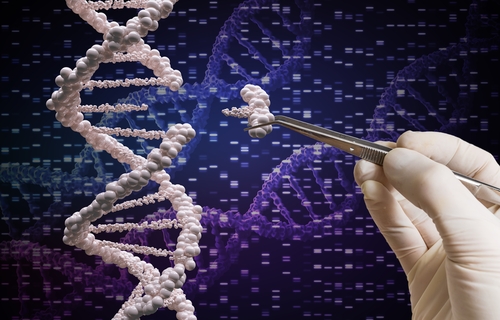DNA Editing Tweak Offers New Way to Correct Disease-Associated Mutations

The researchers who developed the CRISPR DNA editing method that has taken medicine by storm have come up with a tweak to the technique that has implications for Duchenne muscular dystrophy.
They can now edit single units of RNA code without modifying genetic content. RNA are building blocks of life that carry information genes need to make products such as proteins.
The Broad Institute and MIT researchers’ discovery could lead to new strategies for reversing mutations that cause diseases.
Researchers wrote about the RNA Editing for Programmable A to I Replacement, or REPAIR, system in an article titled “RNA editing with CRISPR-Cas13” in the journal Science.
“The ability to correct disease-causing mutations is one of the primary goals of genome editing,” Dr. Feng Zhang, who works at both the Broad Institute and the Massachusetts Institute of Technology, said in a news release. “So far, we’ve gotten very good at inactivating genes, but actually recovering lost protein function is much more challenging. This new ability to edit RNA opens up more potential opportunities to recover that function and treat many diseases, in almost any kind of cell.”
Researchers had made several changes in their CRISPR DNA editing system before this latest one. The idea was to improve the system and make it more specific so it could do a better job of dealing with diseases that stem from genetic mutations, such as Duchenne’s muscular dystrophy.
The REPAIR system changes individual RNA letters, or nucleosides. Problems in those links can cause a number of disease-associated mutations.
Scientists can use REPAIR to change adenosines — identified in the genetic code as A — into inosines, identified as I. The change resets an abnormal version of guanine — a G code — into an A code.
Researchers hope to use the system to treat Duchenne MD, Parkinson’s disease, focal epilepsy, and other disorders that could be corrected with G to A mutations.
“REPAIR can fix mutations without tampering with the genome [or complete set of DNA], and because RNA naturally degrades, it’s a potentially reversible fix,” said Dr. David Cox, the lead author of the study.
As with the original CRISPR method, the REPAIR system relies on an enzyme that can cut the genetic sequence. In this case, the enzyme, Cas13, is derived from the Prevotella bacteria. Researchers engineered it so that instead of cutting an RNA sequence, it changes the letter A to an I.
“The success we had engineering this system is encouraging, and there are clear signs REPAIR can be evolved even further for more robust activity while still maintaining specificity [the ability to hone in on particular targets],” said Dr. Omar Abudayyeh, the co-first author of the study.
In addition to improving the system, the team hopes to identify a delivery system that can convey it to specific tissue.
The researchers will make the new system’s tools available to the scientific community with an eye toward advancing the development of RNA-editing-based therapies.






